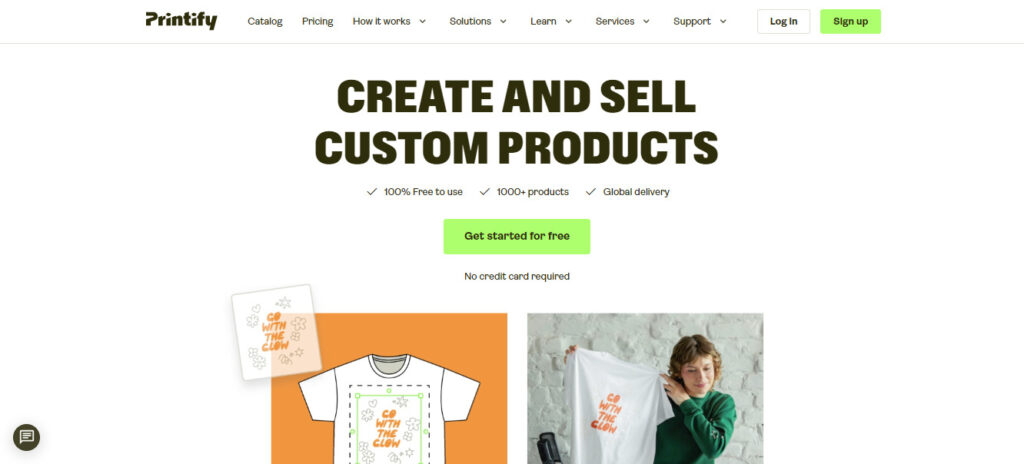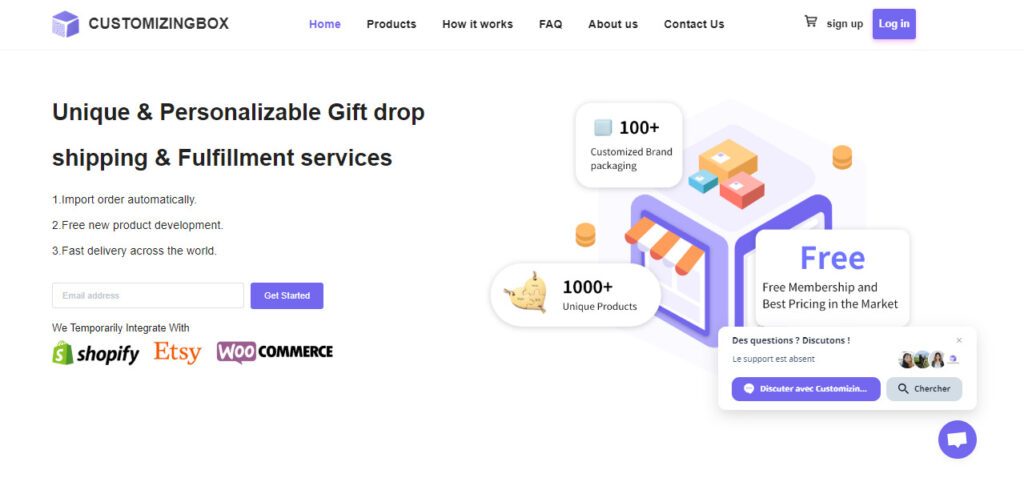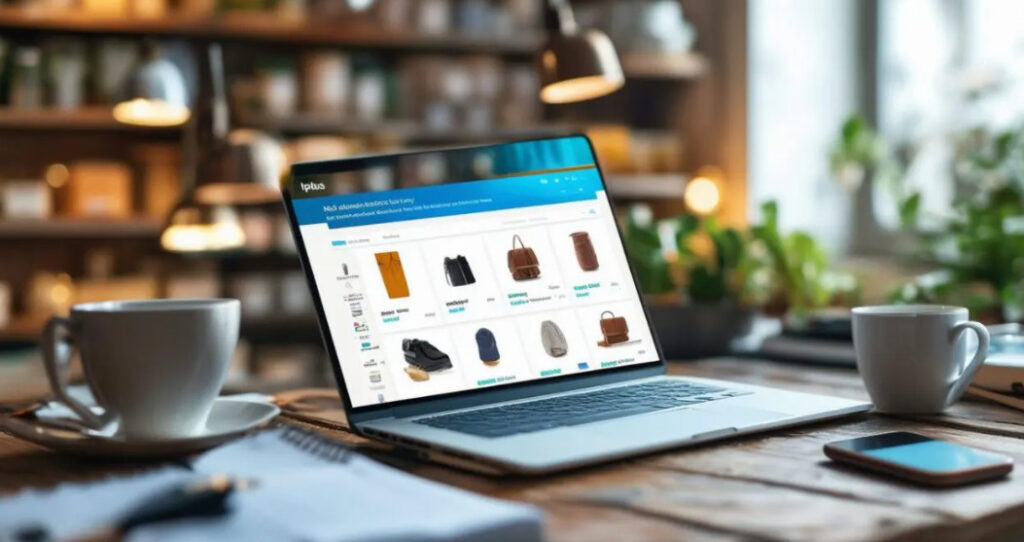China is considered a major player in global e-commerce, especially when it comes to importing dropshipping products to other countries. It’s an attractive destination for e-commerce merchants looking to buy and export goods at remarkably low costs. By purchasing products from China at competitive prices, you can resell them with a high profit margin in your destination country.
Today, shipping products from China to other countries is cheaper than the reverse. This may sound surprising, but it is a well-established fact. To understand this, it’s important to explore the reasons behind the low shipping costs from China. Need a comprehensive guide to plan and succeed in your dropshipping business in China? Let’s dive into all the questions in this article!
Reasons why shipping from China is so cheap

It’s easy to wonder why shipping products from China to other destinations is so inexpensive. For years, dropshippers have benefited from flexible shipping rates for exporting goods from China to their destination countries.
These low rates have been in place for years, helping to keep shipping from China relatively cheap. Here are a few reasons why the cost of shipping from China to other countries remains so affordable:
Universal Postal Union (UPU)
The UPU (Universal Postal Union) was created to standardize the international postal system, streamlining operations between the postal services of different countries. This has made international shipping more affordable and easier. To reduce the cost of shipping between countries, the UPU has categorized countries into various groups based on their level of economic development and size.
Under this system, developing countries receive lower shipping rates when sending mail to wealthier and more developed nations. These countries, in turn, pay higher rates to ship mail to less-developed countries. In this context, China, with its developing economy, benefits from cheaper shipping to economically developed nations.
This is one of the reasons why shipping from China is so affordable.
Economies of scale

China’s manufacturing industry is massive, with thousands of factories producing millions of new products every day. This level of production allows manufacturers to negotiate lower rates with shipping companies, making the export process more regular and bulk-based.
Shipping costs per product are lower, which explains why bulk shipping from China is so much cheaper.
Government subsidies
Recognizing the prowess of Chinese manufacturers on the global stage and the importance of exports for generating revenue, the Chinese government supports its manufacturers. Strong subsidies on export shipping costs encourage merchants to export even more products once they are produced.
Shipping subsidies are provided to shipping companies to keep the cost of shipping each product to lower-developed countries affordable. This encourages foreign countries to purchase goods from China, as they pay less for shipping products. As a result, sellers in China gain more international market share.
The Chinese government heavily subsidizes the transportation sector to stimulate international trade. These subsidies help reduce logistics costs in China, making shipping from China even more affordable.
Furthermore, bilateral trade agreements ease exchanges between China and other countries, such as France, making shipping from China to France highly competitive. This also fosters strong competition among local carriers, further driving down shipping costs to China
Lower labor costs
The cost of living in China is lower compared to other developed countries. As a result, labor costs are kept low, allowing businesses in China to maintain lower production costs than their competitors. This affects the Chinese maritime sector, where operational costs are significantly reduced. Shipping companies are forced to offer very competitive transport rates.
China is recognized as a global leader in mass production. The large volume of goods helps lower shipping costs from China through economies of scale. Containers are often packed to full capacity, which lowers the shipping costs for businesses.
As a result, online sellers can benefit from cheap shipping from China while maintaining competitive margins. This is a crucial advantage for dropshippers looking to expand into international markets.
Competition

China’s busiest ports are key for exporting and shipping goods. However, Chinese shipping companies produce over 96% of maritime containers and 80% of ship-to-shore cranes. These are excellent indicators of a large-scale industry.
With this capability, competition must offer competitive prices to attract new customers. These factors contribute to the reason why shipping from China remains so affordable in the dropshipping market.
Established global shipping routes
China has access to major maritime routes, including the Pacific, Indian, and Atlantic Oceans, connecting it to the rest of the world. Chinese shipping companies have set up regular routes for shipping goods. This results in fierce competition among companies to offer the best prices, reducing shipping costs per product.
Lower logistics costs due to optimized infrastructure

One of the main reasons why shipping from China is so affordable lies in its advanced logistics infrastructure. Modern ports and efficient rail networks streamline the flow of goods, significantly reducing costs for businesses.
Additionally, the abundant and competitive labor force plays a key role in keeping logistics costs low in China. As a result, companies benefit from substantial shipping cost savings, making delivery from China particularly attractive for international merchants.
Shipping from China remains so inexpensive thanks to its reduced logistics costs, advanced infrastructure, and international trade agreements. This combination results in unbeatable shipping savings, offering low shipping rates for trade between China and France.
Shipping from China and to China: A comparative overview

Shipping from China is popular due to its low cost and efficiency. Understanding why shipping from China is so affordable hinges on key factors: high export volumes, optimized logistics costs, and tailored shipping strategies that cater to international trade.
China’s export volume exceeds imports
The affordability of shipping from China is mainly due to the imbalance between exports and imports. China’s export volume far exceeds its imports, creating a significant disparity.
This imbalance allows carriers to maximize their capacity, resulting in low shipping costs for exporters. Additionally, modern infrastructure supports international trade from China, further optimizing China’s logistics costs.
This model benefits those looking to ship from China to France at competitive prices while promoting an efficient shipping economy in China.
Empty package returns and their impact on costs
Another key factor that explains why shipping from China is affordable is the abundance of empty package returns. Rather than leaving containers unused, carriers offer significantly reduced delivery fees to fill them.
This strategy lowers transportation costs from China. It allows for low-cost shipping to China while accounting for the operational expenses of businesses.
Thus, China’s shipping economy relies on this smart optimization strategy, making shipping to and from China even more attractive for international commerce.
What are the differences between import and export rates from China?

China has enhanced its export capabilities through modern infrastructure and government subsidies that reduce logistics costs. However, imports face hurdles like taxes and quotas, which is why shipping from China remains a cost-effective solution for international merchants.
Improved logistics network for export
One of the key reasons why shipping from China is so affordable lies in its exceptional logistics infrastructure. The Chinese government has made substantial investments in efficient ports, airports, and freight lines to support international trade.
These advanced infrastructures help reduce both import and export shipping costs to and from China. Additionally, large logistics companies benefit from economies of scale due to high volumes of goods, directly impacting the cost of shipping from China, making shipping from China to France especially competitive. Government subsidies further bolster this trend by reducing logistics costs in China.
Higher import costs to balance trade flows
On the other hand, import costs to China are often higher. This is due to strict customs duties, import quotas, and regulations aimed at protecting local industries. Unlike exports, imports receive fewer government incentives.
As a result, transportation costs to China increase, creating a trade imbalance. This model benefits shipping from China for international trading partners while maintaining the competitiveness of local Chinese businesses.
China’s export-focused policies, supported by optimized infrastructures and subsidies, help maintain its low shipping costs, while the import sector is burdened with taxes that increase logistics costs.
Conclusion
Shipping from China is particularly affordable due to a combination of key factors. The low cost in China stems from mass production, advanced logistics infrastructures, and government subsidies that reduce logistics expenses in China. Moreover, China’s central position in global trade facilitates agreements with carriers, making shipping from China cost-effective. However, shipping to China can be more expensive due to strict customs rules and the reverse flow of trade. This cost advantage for shipping from China enables businesses to stay competitive in global markets, but it is crucial to assess import shipping costs to China in order to make the most of the cost-effective transportation options available from China.
FAQ: Frequently Asked Questions
Why is shipping from China so cheap?
Shipping from China is affordable due to government subsidies, low production costs, and favorable international trade agreements. Additionally, modern infrastructure in China helps reduce logistics costs, ensuring cost-effective shipping for businesses and consumers alike.
Why export to China?
Exporting to China offers access to a massive, dynamic, and growing market. While shipping costs to China can be high, the potential for profit often outweighs these challenges. International trade with China encourages lucrative exchanges due to the constant demand for high-quality foreign products.
Why is shipping to China so expensive?
Shipping costs to China are high because of customs duties, trade restrictions, and an often unbalanced logistics flow. Unlike shipping from China to France, the lower volume of imports into China results in higher transport costs for businesses.
What obstacles or taxes apply when shipping goods to China?
When shipping to China, customs duties and import taxes are applied based on the value and nature of the goods. These costs, combined with logistics expenses within China, can increase the price of shipping to China. Complete documentation is essential to avoid costly delays.
Why are delivery times sometimes long despite low costs?
Although shipping from China is optimized for low delivery costs, delays can occur due to customs procedures, high demand, or cost-effective shipping methods like sea transport. This shipping economy from China often comes with a trade-off in speed.

























